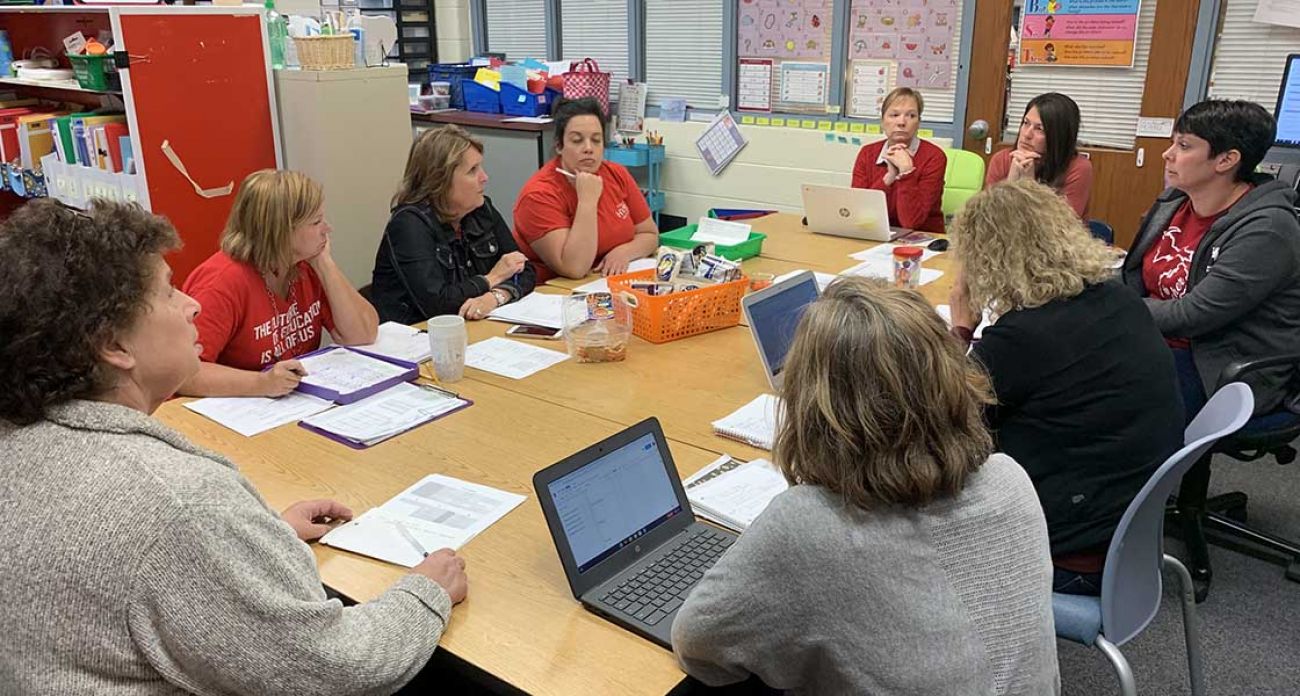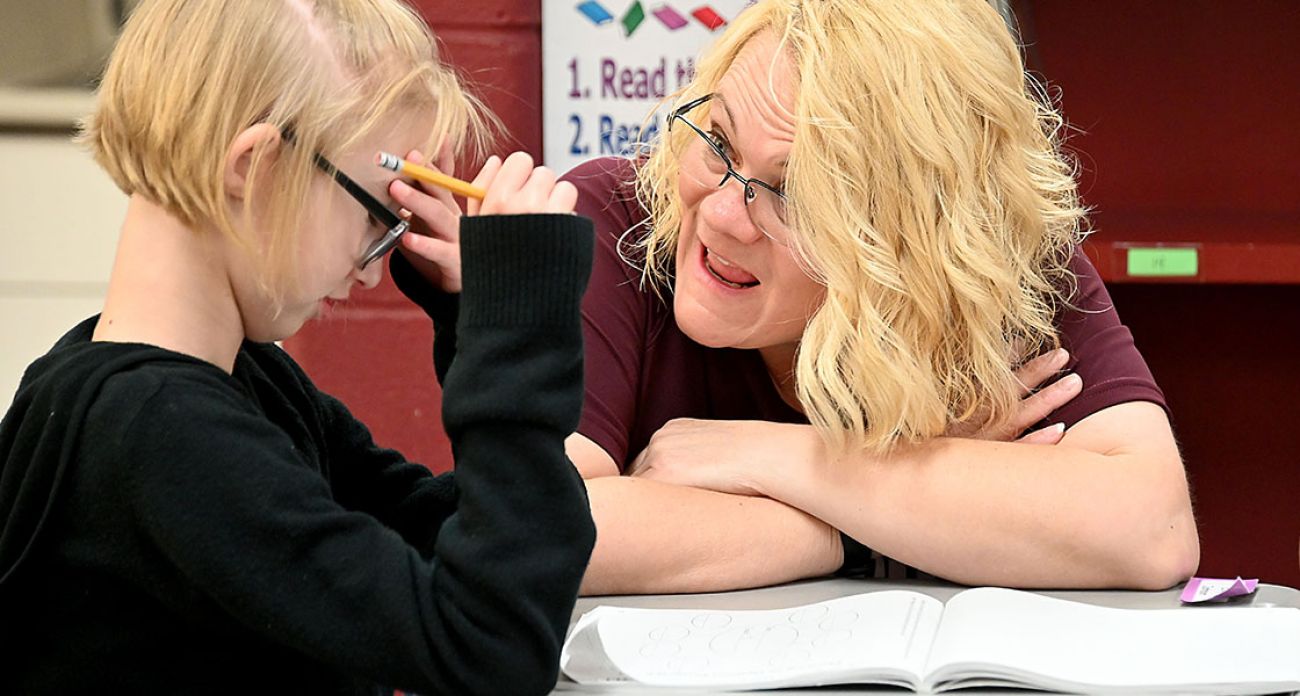If work doesn’t count, will Michigan students bother during coronavirus?

What Michigan students are expected to learn this spring, how that schooling is delivered, and even how long students are expected to study, depends on where they live.
And some school districts aren’t sure how many of their homebound students will, in effect, play hooky through the end of the school year.
Since the coronavirus pandemic forced Gov. Gretchen Whitmer to close Michigan’s public and private schools for the remainder of the school year, school administrators and teachers have scrambled to put together plans for “distance learning,” to continue education as best as possible from the homes of 1.5 million K-12 students. Many of those plans, being developed in more than 900 individual school districts and charter schools across the state, are still in the works, with a deadline for completion by April 28.
But interviews Bridge Magazine conducted with teachers and superintendents offer glimpses of how remote learning is likely to vary across Michigan, from 100-percent online education to packets of worksheets arriving in the mail.
- The latest: Michigan coronavirus map, locations, updated COVID-19 news
- What Michigan's new coronavirus stay-at-home executive order means
- When Michigan unemployment, stimulus checks, and $600 CARES money will arrive
Those interviews also revealed a new challenge: getting homebound students to participate even a few hours per day in schoolwork — work many districts told Bridge isn’t required to be completed for students to advance to their next grade if they were already passing before the school closure March 16.
“Imagine the mess we'd have next fall if kids did not move to their next grade as planned,” said Lou Steigerwald, superintendent of Norway-Vulcan Area Schools in the western Upper Peninsula. “It'd be like the engine on a train coming suddenly to a dead stop and then watching the cars on the train pile up behind it.
“I think we have to frame everything during this time as the most unusual circumstances of our lifetimes,” Steigerwald said. “It took me a bit to get there mentally, but I did get there.”
Under Whitmer’s April 2 executive order schools are to continue to provide education to students through the end of the school year in June, with what form that learning will take to be determined by local school districts. Schools are asked to move ahead with curriculum to the best of their abilities under the circumstances, with each district deciding how to do that.
Whether completion of remote learning assignments is required to advance to the next grade is up to local school districts. Three teachers who spoke to Bridge said they’ve been told by administrators in their districts that students will not be penalized for not participating in remote learning.
Schools say they have gone to great lengths to pull together plans to teach homebound kids. Several school leaders cried while describing to Bridge how proud they were of the efforts.
Still, administrators and teachers acknowledge the limitations of remote learning plans assembled on the fly by institutions built to provide in-person education.
“Like all institutions, we got caught with our pants down (by the pandemic),” said Michael Adams, a third-grade teacher in Holt, in Ingham County. “Gretchen Whitmer set the bar pretty low, and a low bar is about all we’re going to be able to step over.”
Online, packets, and pass/fail
Distance learning guidance for school districts, issued in April by the Michigan Department of Education, suggests a minimum of three hours of instruction for high school students. The guidance doesn’t offer a specific length of instruction for elementary students, but recommends that structured school time be longer for higher elementary grades.
“We acknowledge and accept that time spent in structured, at-home learning activities will be different when compared to teaching and learning in a traditional or regular school day,” the MDE memo states. “Districts should design daily/weekly schedules that work best for their students and families, with a focus on flexibility and giving grace.”
In Detroit Public Schools Community District, the largest school district in the state, students won’t receive traditional letter grades. Instead, they’ll get either a “pass” or a “fail” for the semester.
Distance learning will be a combination of online offerings and packets of material that can be picked up at the district’s meal pickup sites, according to a Q&A posted on the district website.
At Kenowa Hills Public Schools near Grand Rapids, students who were passing classes before the statewide school closure March 16 will pass, no matter what happens during the remaining, remote-learning portion of the semester. Students who were failing before the closure “will be given learning opportunities to earn a “P” (for passing) prior to the end of the school year,” said Kenowa Hills Superintendent Gerald Hopkins.
This week, Kenowa Hills families are picking up Chromebooks or IPads that their children normally use at school, so they can use them for remote learning. “We’re getting these devices ready to deploy,” Hopkins said. “They won’t have to get out of their cars” to pick them up.
The district has enough devices for all its students, but Hopkins is quick to admit “this does not replace face-to-face instruction, it never will. We’re going to make mistakes, and we’ll adjust.”
Hopkins also acknowledged that the district is unlikely to get all its students to participate in remote learning, but that he didn’t see that as a large drawback. “We don’t get 100-percent participation when students are in classrooms,” he said.
Lower elementary grades (K-2) will get 30 minutes of instruction per day, with higher elementary grades getting 60 minutes, Hopkins said. High school will receive up to two hours of schoolwork per day.
In the U.P.’s Norway-Vulcan, seniors will receive letter grades — with those grades being based on students’ third-quarter grades when schools closed, said superintendent Steigerwald.
Steigerwald told Bridge that no student’s academic standing related to advancement to the next grade or graduation will be harmed by anything that happens during the school closure.
He said he realizes that some students may do little learning between now and June.
“It takes a great deal of self-motivation and proper home support for online learning to work for a student,” Steigerwald said. “Students tend to have, or not have, these supports to varying degrees.
Still, “online and conference call learning is better than not doing anything,” Steigerwald said.
‘Charlotte’s Web’ by Chromebook
So far during the pandemic school closure, Michele Hojnacki has done more learning than some of her students.
The third-grade teacher at Lakewood Elementary in Huron Valley Schools rattles off online programs she’s figuring out to prepare for ramped-up remote learning to begin this week. She’s recording herself reading “Charlotte’s Web” and practicing how to conduct writing lessons on an easel in view of a laptop camera.
Teachers have been asked to teach at least some of the material that would have been taught if classrooms had remained open.
“I’ve been meeting over the phone with the other third-grade teachers, and determined what [curriculum] we feel is essential moving forward,” Hojnacki said. “We’ve been given a lot of freedom to present in any way we can to the best of our ability.”
Lessons will be online, with meetings on Google Classroom and assignments written in Google Documents.
So far, only 10 of Hojnacki’s 23 students have logged in to the online school.
“If we do not see students log on, I’m to report it to our social worker and our literacy team will contact the families to ask in what way they can help,” Hojnacki said.
That level of staff support is common in Huron Valley where, when classrooms were open, Hojnacki could call on a team of specialists to help students who were behind in reading.
In a typical meeting in October, Hojnacki strategized with the school’s reading coach and five parapros who’ve received training on early literacy, to game plan upcoming reading sessions with struggling third-graders. The students are pulled out of Hojnacki’s class four days a week, for 45 minutes at a time.
In all, eight people joined Hojnacki to analyze student reading data.

Speaking last week with Bridge, Hojnacki said she has confidence the number of students who participate in remote learning will increase now that families know their kids aren’t returning to classrooms anytime soon.
“Parents are trying to work from home, and trying to help their kids log on, and they forget their log-ins. Hopefully, now that parents are settling into their own routines, there will be more participation.”
And if kids still don’t log on?
“Nothing will happen if they don’t do it,” Hojnacki acknowledged.
“Next year, we’re going to have to do something to fill the holes,” she said. “What that looks like, we don’t know yet.
“My thought is that this will take a couple years to catch up.”
‘Discouraging and disappointing’
Eighty miles north, in tiny Mayville in Michigan’s thumb, third-grade education for the remainder of the school year will arrive in the mail, in thick envelopes stuffed with worksheets and reading material.
The packets will contain two weeks of schoolwork, said third-grade teacher Tara Olar. More work will arrive later.
Mayville can’t use online learning for its students, because only about half of its families have computers and Internet speeds fast enough to participate in online meetings. So, teachers wait for envelopes of schoolwork to arrive in students’ mailboxes.
“We give [families] the option of coming to school and put [completed assignments] in a tote,” Olar said. “I told the other third-grade teacher, I’m not sure we want [completed assignments] back — we’re not grading them. We’ve been told we’re not flunking anybody, anyway.”
The stark disparities — with more affluent districts working online with students, while lower-income districts relying on snail mail — is a continuation of resource differences that existed before the pandemic hit.
While Huron Valley’s Lakeview Elementary had a team of paraprofessionals trained in literacy education, Mayville had one paraprofessional who pulled struggling third graders out of teacher Olar’s classroom to work on reading individually or in small groups. But that paraprofessional routinely had to fill in for absent teachers, canceling those vital extra reading sessions. On those days, Olar tried to work with the students in class when she could find time.

The paraprofessional had to take over classes because the rural school district had a shortage of substitute teachers, a growing problem in Michigan that is related to a larger, overall teacher shortage in urban and rural parts of the state.
“This is a nice group of kiddos, very loving and caring and considerate,” Olar said. “But there’s just so many resources we have. We definitely need more.”
The response so far has been disheartening.
Of Mayville’s 39 third-graders, just 23 have connected to Google Classroom, Olar said.
“It’s discouraging and disappointing,” Olar said. “But I guess I have to look at it as, there are 19 kids who are going to have some conversation with us.”
‘Bailing water as fast as we can’
Adams, the third-grade teacher at Wilcox Elementary in Holt, suggests Michigan needs to recognize the limitations of remote learning during the pandemic.
Lessons, at least at the elementary level, will occupy children for far fewer hours than a traditional school day. In Holt Public Schools, in Ingham County south of Lansing, third-grade teachers are preparing online lessons meant to keep students busy for between 40 and 100 minutes a day. Huron Valley, by comparison, hopes to keep third-graders students focused on schoolwork for one to two hours a day.
Holt plans to advance curriculum in reading and math while kids are homebound. The key for remote learning for Adams, though, is more basic than specific lessons — it’s to maintain relationships with students.
“The connection piece is key,” Adams said. “My fear is not the loss per se to not meet a certain standard. My fear is, America is not set up to deliver that kind of learning.
“It’s uncharted territory for sure,” said Adams, who spent his school’s spring break last week developing online lesson plans with his fellow third-grade teachers.
“We’re bailing water as fast as we can,” Adams said, “but we still have a leak.”
That leak, Adams said, isn’t a lack of effort or skill on the part of educators at his school and across Michigan. Rather, it’s the very different lives of children once they leave school for the day – the kind of difference that a six-month hiatus from classrooms is likely to exacerbate.
“Kids are often behind [in reading] for reasons that are out of institutions’ control,” Adams said. “I'm dealing with homelessness, broken homes, poverty, things that cause constraints upon their ability to learn.”
On Monday, Adams gave his students a short math assignment. Seven of his 24 students completed the assignment.
“Being in a learning community can’t be replicated in any other way than being in a room and arguing and looking in their face,” Adams said. “It just doesn’t work any other way.”
RESOURCES:
- Hey, Michigan, here’s how to make a face mask to fight coronavirus
- Michigan coronavirus dashboard: cases, deaths and maps
- Michigan families can get food, cash, internet during coronavirus crisis
- How to give blood in Michigan during the coronavirus crisis
- 10 ways you can help Michigan hospital workers right now
- Michigan coronavirus Q&A: Reader questions answered
- How to apply for Michigan unemployment benefits amid coronavirus crisis
Michigan Education Watch
Michigan Education Watch is made possible by generous financial support from:
Subscribe to Michigan Education Watch
See what new members are saying about why they donated to Bridge Michigan:
- “In order for this information to be accurate and unbiased it must be underwritten by its readers, not by special interests.” - Larry S.
- “Not many other media sources report on the topics Bridge does.” - Susan B.
- “Your journalism is outstanding and rare these days.” - Mark S.
If you want to ensure the future of nonpartisan, nonprofit Michigan journalism, please become a member today. You, too, will be asked why you donated and maybe we'll feature your quote next time!






